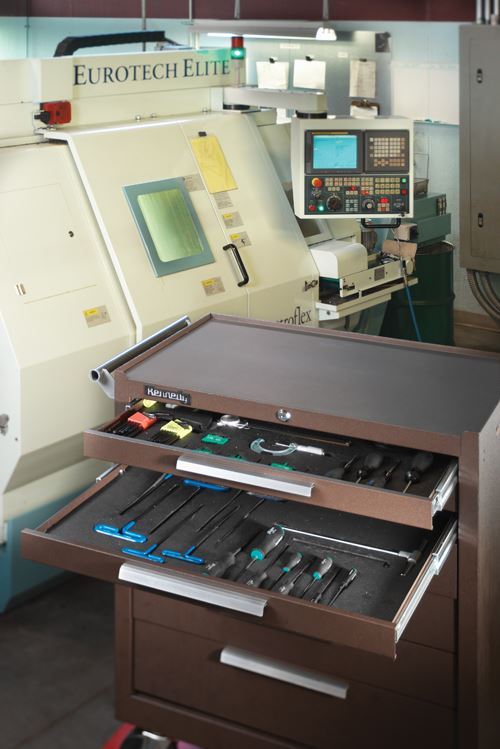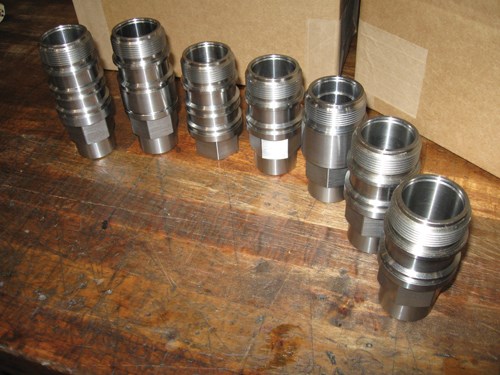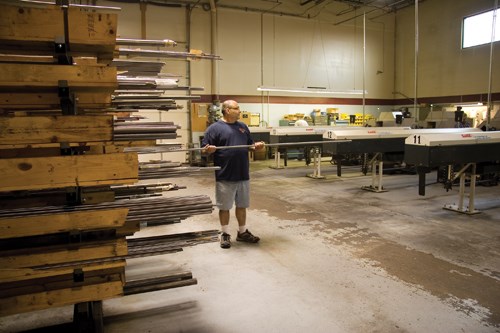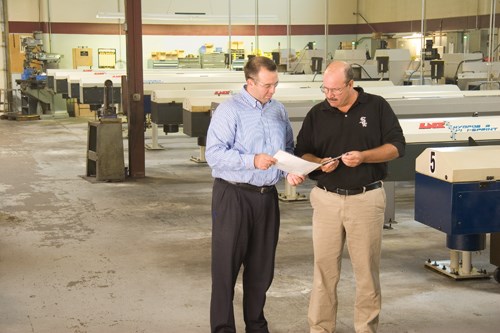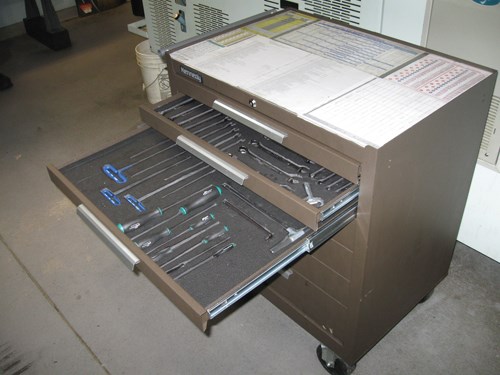Bryco Before and After
Within a two-month period, this Chicago-area contract shop reorganized the shopfloor, implemented new procedures and eliminated employee toolboxes. Here are the benefits the shop has seen.
Share




The shop also has the same amount of space that it did before, but Bryco now does more with that space. A new layout, organized around a leaner workflow, freed up enough space for the shop to add four new machines.
Even better, there is still space left over for even more machines, he says. The shop is more ready for additional growth than it has been in a long time.
Mr. Bettinardi says floorspace was the issue that drove this shop to commit to lean. The shop had grown the way almost any job shop grows—by adding machines and workstations as needed, and sticking them wherever space allows. Over the years, this led to a muddled layout that wasted space and wasted employees’ time in ways that never even became fully apparent to the shop until the lean process was in place.
The move to this new layout happened at the end of 2007. Similar machines were moved together, related workstations were moved together, and material stocks were moved closer to the machines they fed.
“A bargain,” Mr. Bettinardi says.
The savings from having a more logical layout went beyond what the company could have predicted, because it never realized the extent to which the old layout wasted effort and time.
Does this matter? It might seem as though the move would not make all that much difference because the walk across the shop is not all that long. However, whom an employee talks to depends on where that employee is stationed.
The Toolbox Transition
By January, the commitment to lean manufacturing was fully implemented. It involved more than just the move. It also involved changes in the way shop personnel thought about various steps in their daily work. In fact, perhaps the most dramatic change did not involve equipment relocation at all. As part of the commitment to achieving a less wasteful process, the shop concluded that individual toolboxes had to go.
The eight carts belong to the shop instead of to any employee. Two versions of the carts correspond to the Swiss-type side of the shop and the turn-mill side of the shop. Employees carefully designed these carts, equipping them with standardized sets of all of the tools they determined to be essential, and using foam pockets in the drawers to establish a standard place for every tool. These standardized cart designs were one of the most important engineering achievements on the shop’s journey to lean.
Dennis Gilhooley Jr. is Bryco’s vice president. He says he handled machinists’ concerns in this way: Anyone who wanted to keep his toolbox was free to do so. The condition was that the toolbox reside in his office. Mr. Gilhooley wanted to know if a machinist had to go to his toolbox for some tool that could not otherwise be obtained, so that this tool could be added to the standard carts.
Still, every process improvement also reveals the way that improvement should have been done. In retrospect, Bryco discovered that the setup carts should have been color-coded. In the future, they probably will be. Time is still sometimes lost on the confusion about which tool goes to which cart, and coloring each tool to match a specific, individual cart would easily solve this problem.
Not all of the shop’s setup time delays came from the toolboxes, however. Even more of the setup delay had to do with extreme setup changeovers. This was particularly true on the turn-mill machines.
However, the turn-mill machines (from Eurotech) can accommodate a much larger variety of workpieces. Here, switching from one part number to another can involve time-consuming changes to both the cutters and the workholding.
Bryco identified 13 distinct part families among its recurring turn-mill parts. Mr. Gilhooley says the most efficient solution would have been to give each part family its own machine—if only the shop had 13 of these machines. Instead, the shop has eight, and at least one of these has to be kept free for short-run, unexpected jobs. Therefore, most of the machines were assigned multiple part families. Machine number six, for example, is now dedicated to part families “6A” and “6B”—two unrelated and dissimilar groups of parts.
However, those long setups are no longer commonplace, and that is key. Most setups now involve only minor adjustments to shift from one part to a related part, and the shop can schedule jobs so that work remains “in the family” in this way for as long as possible. Long setups may not have been eliminated, but the more organized process dramatically reduces how many long setups the shop has to bear.
An example relates to the cost of cutting tools. On one part family in particular, cutting tool price increases began to affect the economics of the part, and the shop did not want to have to pass along the increase. The shop therefore began to experiment with how to control the tooling cost. Having a single, fixed machine running a single, fixed process provided an excellent test bed for experimentation—something the shop rarely had before. The shop was free to play with the relatively few variables that still remained, adjusting the speed, feed rate, depth of cut, tool entry and clamping. None of these changes significantly improved the cost of the part. However, changing the brand of coolant finally did it.
“It was the last thing we tried,” Mr. Gilhooley says. Without lean manufacturing, they never would have tried it.
Read Next
Registration Now Open for the Precision Machining Technology Show (PMTS) 2025
The precision machining industry’s premier event returns to Cleveland, OH, April 1-3.
Read MoreSetting Up the Building Blocks for a Digital Factory
Woodward Inc. spent over a year developing an API to connect machines to its digital factory. Caron Engineering’s MiConnect has cut most of this process while also granting the shop greater access to machine information.
Read More5 Rules of Thumb for Buying CNC Machine Tools
Use these tips to carefully plan your machine tool purchases and to avoid regretting your decision later.
Read More

